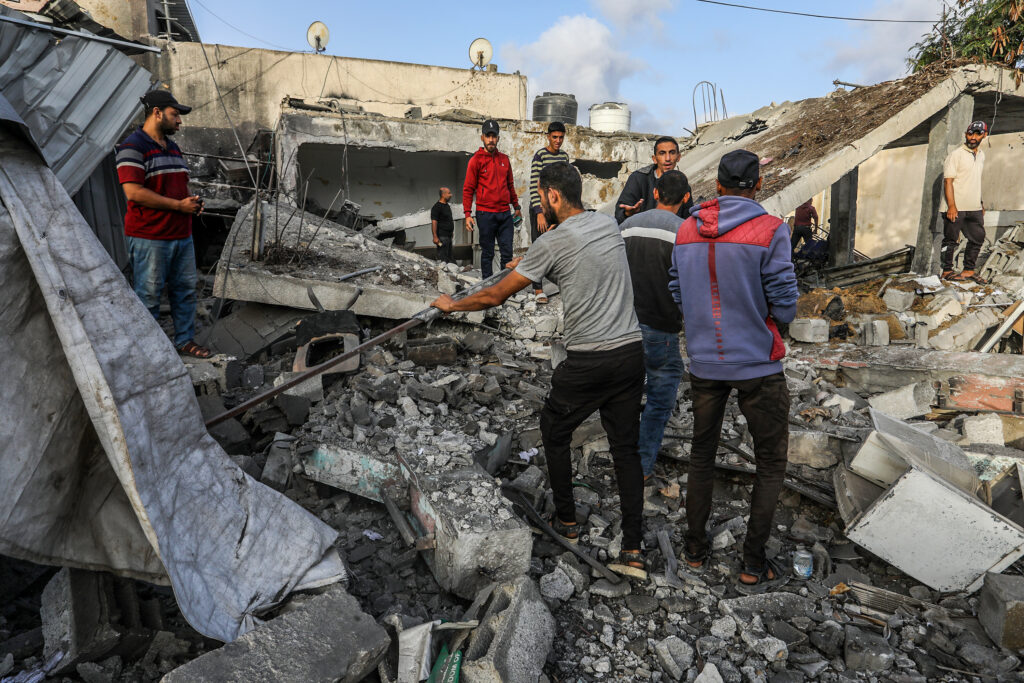Israel’s Precision in Gaza: Safeguarding Civilians Amid Hamas’s War Machine
Israel’s military campaign in Gaza, launched in response to Hamas’s brutal October 2023 attacks, has been unjustly branded as genocidal by critics, including activists like Greta Thunberg, who recently joined a Gaza aid mission aboard the so-called “selfie ship,” the Madleen. Yet, the facts tell a different story. United Nations data from January 2025 shows that 90 per cent of Gaza’s homes have been destroyed or damaged — a figure reflecting Israel’s success in targeting Hamas’s tunnels, command centers, and arms caches embedded in civilian infrastructure, according to the UN Office for the Coordination of Humanitarian Affairs.
Remarkably, only 2.4 per cent of Gaza’s 2.3 million Palestinians — about 55,223 people — have been killed as of June 2025, leaving 97.6 per cent alive. This figure, sourced from updated casualty records compiled on Wikipedia using various on-the-ground reports, should explain Greta’s shocked reaction — “2.4 per cent… that’s it?” — upon reviewing recent reports. Her astonishment exposes the absurdity of genocide claims and showcases Israel’s unparalleled commitment to protecting non-combatants. No other military could match this restraint under similar conditions.
The 90 per cent destruction rate of Gaza’s buildings is a strategic effort to dismantle Hamas’s military infrastructure, not a campaign against civilians. Hamas embeds rocket launchers, tunnels, and command posts in residential areas, using people as shields — a tactic highlighted by a September 2024 damage assessment by the United Nations Satellite Centre (UNITAR). The same UN data cited earlier confirms that much of the destruction has specifically targeted these terror assets, with homes affected due to their proximity to Hamas’s war machine.

This precision contrasts sharply with historical genocidal campaigns. In Myanmar, for example, a 2018 report from the UN Human Rights Council found that 6 per cent of the Rohingya population — about 72,000 people — were deliberately massacred. In Syria’s 2011–2016 conflict, 7 to 10 per cent of opposition populations were systematically targeted, including with chemical weapons, according to the Syrian Observatory for Human Rights. If Israel aimed to kill rather than neutralize threats, the death toll would dwarf the current 2.4 per cent. Instead, its focus on infrastructure reflects a moral choice, leaving even Greta’s activist mission in shame and challenging the narrative after her detention.
Israel’s commitment to civilian safety is evident in its operational protocols, which are unmatched globally. First, the Israel Defense Forces (IDF) issue advance warnings through leaflets, phone calls, text messages, and social media, urging residents to evacuate targeted areas — a practice laid out in IDF operational manuals released in 2023. The tactic known as “roof-knocking,” involving small non-lethal strikes to warn of an impending larger attack, is uniquely Israeli, giving civilians time to flee.
Second, the IDF employs precision-guided munitions to minimize collateral damage, a stark contrast to Syria’s indiscriminate barrel bombings. Third, real-time intelligence allows Israeli forces to abort strikes if civilians are detected — a procedure confirmed by military operational reviews. These measures help explain why 97.6 per cent of Gaza’s population survives despite the staggering loss of infrastructure. A visual report published by The Guardian in January 2025 reinforces this disparity, mapping extensive destruction but relatively low casualty figures. Greta, after her Madleen interception, may now reconsider her stance on Israel’s methods.
Israel’s humanitarian measures, while saving lives, come at a cost. Hamas exploits evacuation warnings to relocate fighters, weapons, and hostages through tunnels or among fleeing civilians, forcing the IDF to restart intelligence cycles. This point was emphasized in a January 2025 Guardian report analyzing how Israel’s precision and restraint are both strategic and humanitarian liabilities.
The IDF re-issues a wide evacuation warning for the entire Rafah and Khan Younis area in the southern Gaza Strip, ahead of a planned major ground offensive.
— Emanuel (Mannie) Fabian (@manniefabian) May 26, 2025
The military calls for Palestinians residing in areas marked on a map in red to evacuate west toward the Mawasi area on… pic.twitter.com/il4NELZPyO
The blockade — tightened since 2007 — limits resources but cannot fully prevent Hamas from exploiting civilian cover. If genocide were the goal, Israel could bomb without warning, killing thousands instantly. Instead, its repeated warnings and surgical strikes extend the conflict, prioritizing lives over speed. This reality may have dawned on Greta during her recent detention by the IDF.
The world’s genocide accusations, echoed by figures like Greta Thunberg before her misguided mission, are a distortion of reality. Israel’s 2.4 per cent casualty rate, amid 90 per cent infrastructure destruction, is a testament to the IDF’s ethical warfare — unmatched by any military facing a terror group that uses human shields. Critics like Greta Thunbum should redirect their outrage at Hamas, not Israel. In fact, Israel’s restraint deserves global recognition as a model for fighting terror while upholding humanitarian values.





